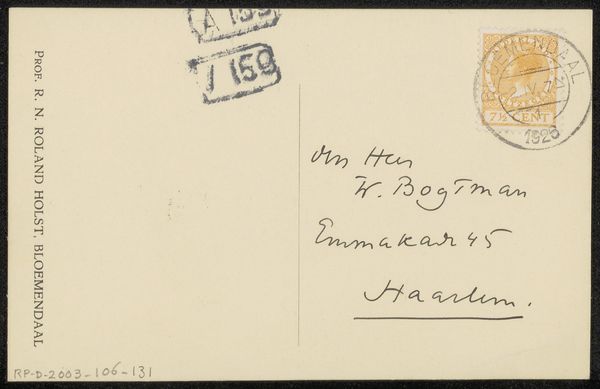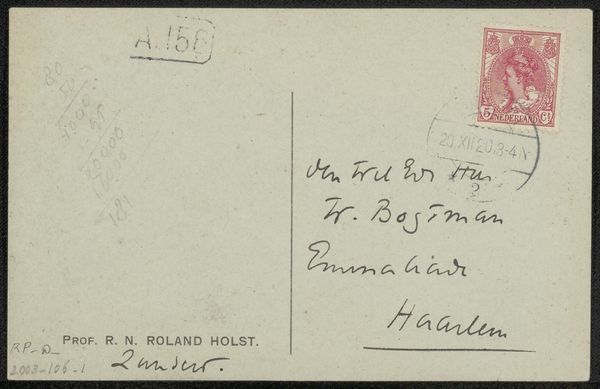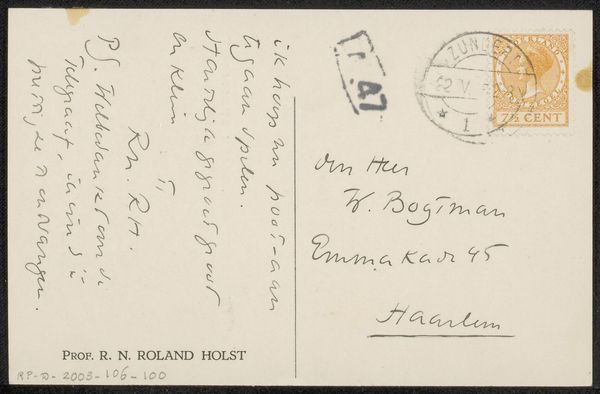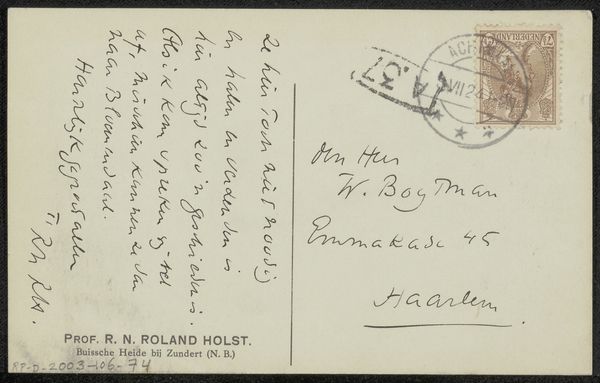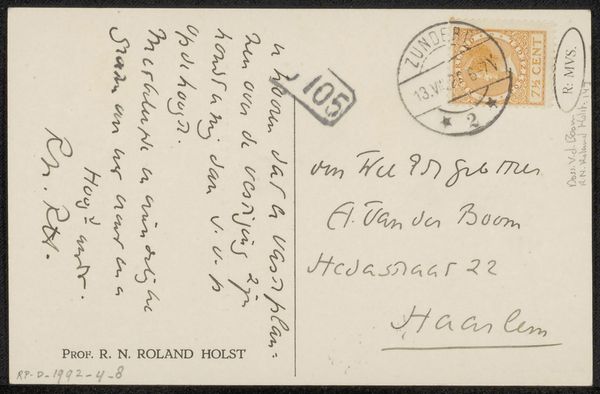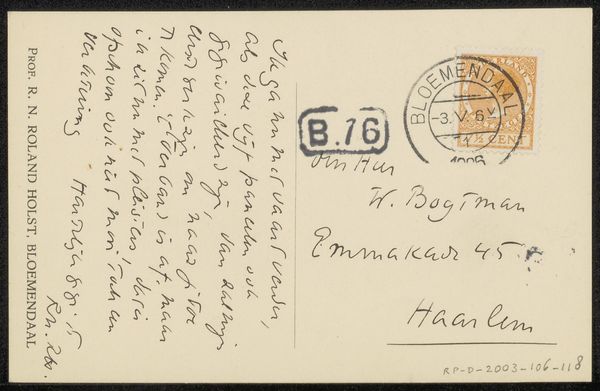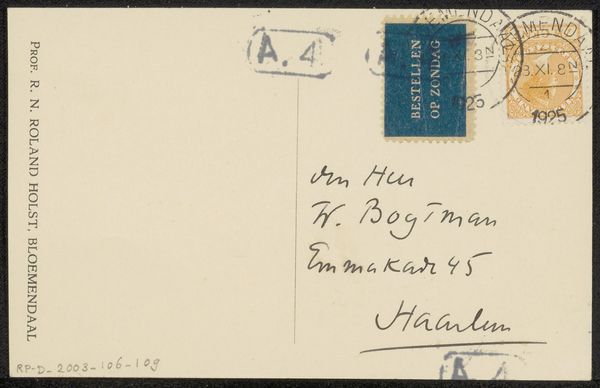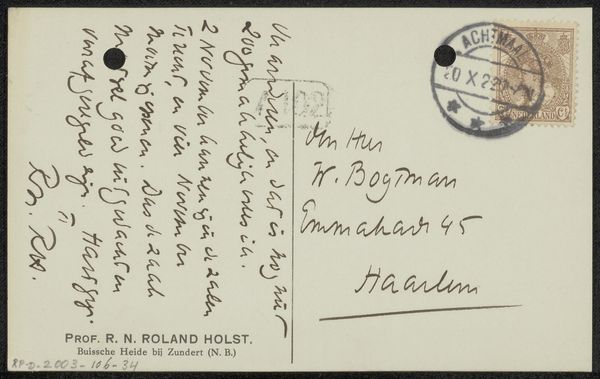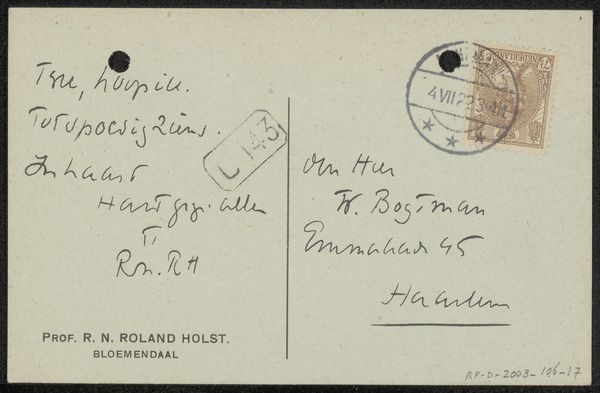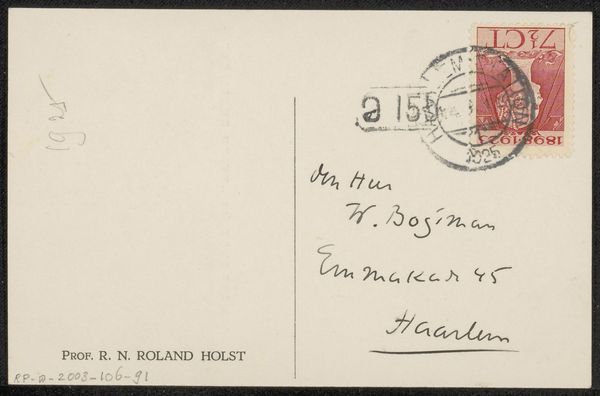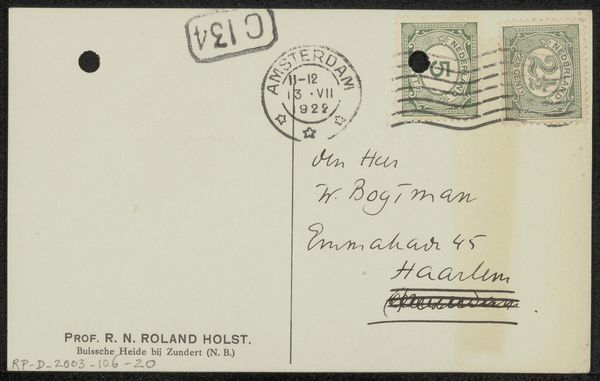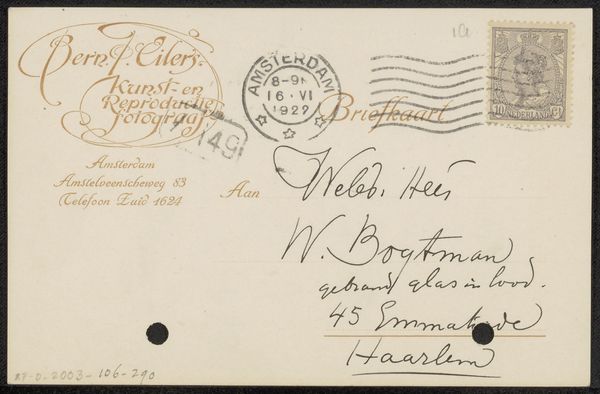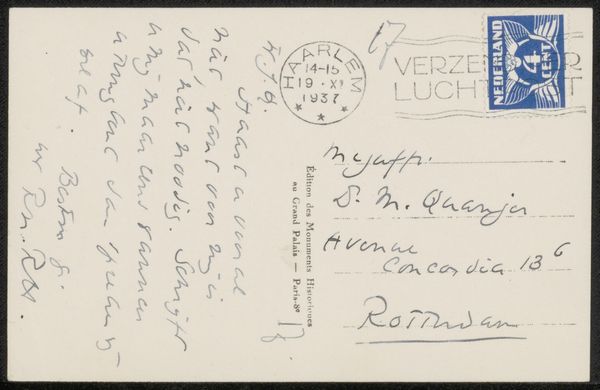
drawing, textile, paper, ink, pen
#
drawing
#
comic strip sketch
#
old engraving style
#
hand drawn type
#
textile
#
paper
#
personal sketchbook
#
ink
#
ink drawing experimentation
#
pen-ink sketch
#
pen work
#
sketchbook drawing
#
pen
#
storyboard and sketchbook work
#
sketchbook art
Copyright: Rijks Museum: Open Domain
Curator: Today, we're looking at "Briefkaart aan Willem Bogtman," a postcard crafted before 1929 by Richard Nicolaüs Roland Holst. It's a pen and ink drawing on paper, and remarkably, it's also considered textile due to the nature of postcards. You can view it here at the Rijksmuseum. Editor: My immediate reaction is how personal this feels, almost like glimpsing someone's private thoughts or quick communication. It's a very humble, human object. The casual script adds a lot of character. Curator: Precisely. Roland Holst was a prominent figure in Dutch art and design, deeply involved in socialist ideals. His works often carried political and social commentary, aiming to uplift the working class. The postcard, though seemingly simple, holds an interesting place within the context of correspondence during a pivotal historical time. Editor: Absolutely. Postcards became an affordable and accessible form of communication at that time. As for Roland Holst's political commitment, I wonder, how did he see art as a vehicle for social change, and how is it embodied here? Curator: Roland Holst saw art as a tool for fostering a collective consciousness. His design work was largely oriented toward the labor movement and the distribution of knowledge to the working class. Although "Briefkaart aan Willem Bogtman" seems informal, its existence as a tool of social communication to a fellow named Willem offers clues about that commitment. And Holst's work in graphic design for socialist causes undoubtedly influenced even his most personal creations. Editor: Yes, I appreciate that insight. I find myself imagining who Willem Bogtman might have been, and how this brief message contributed, even in some small way, to a network of shared ideals or perhaps simply maintained a human connection across social stratifications. Curator: That's what makes it compelling; it’s an artifact that invites speculation about intimate interactions against a larger backdrop of social change. Thank you. Editor: Indeed, it underscores the importance of daily interactions as the fabric of social movements.
Comments
No comments
Be the first to comment and join the conversation on the ultimate creative platform.
